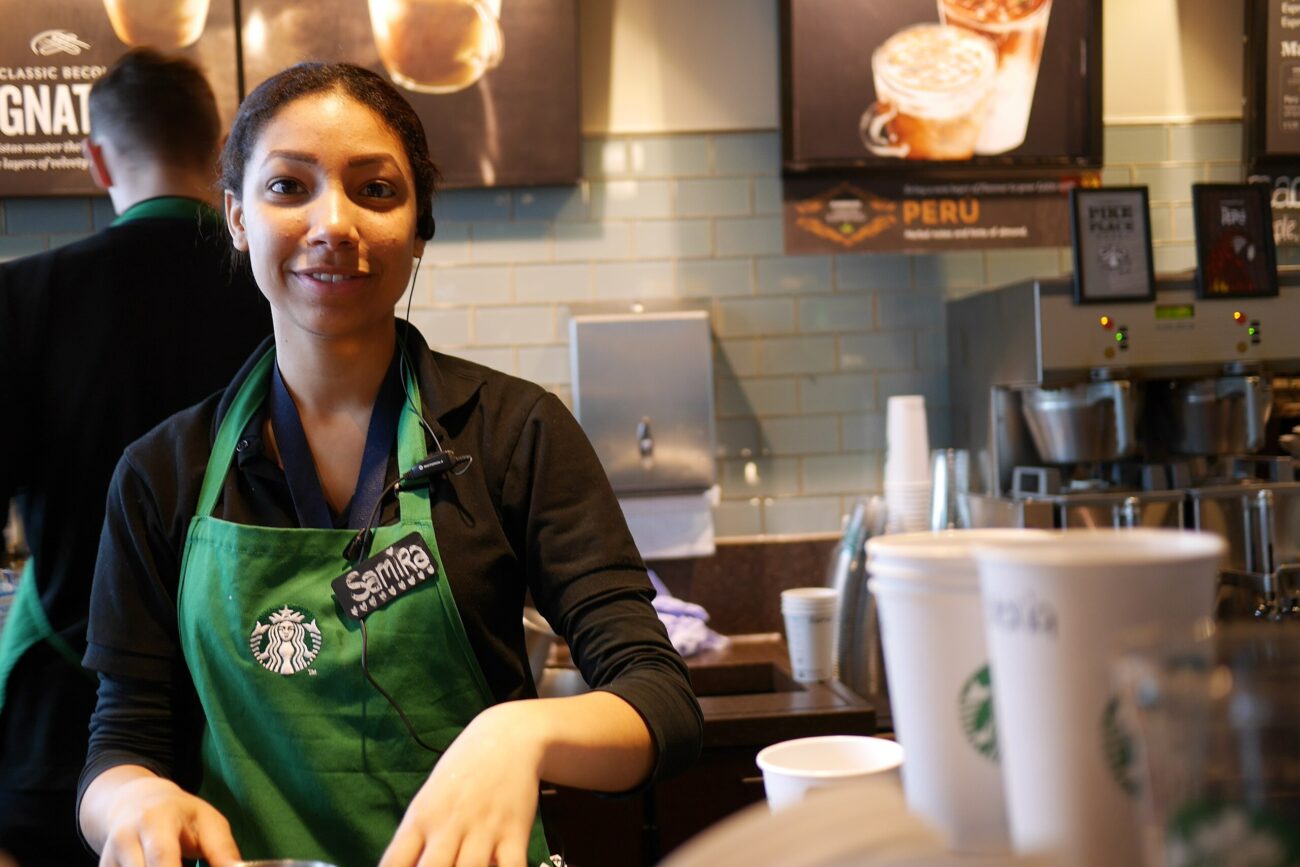Corporate promises about AI helping humans hit different when you’re cutting 900 jobs at the same time. Starbucks rolled out Green Dot Assist—its first generative AI barista assistant—in June 2025, positioning the voice-activated tool as support for human workers. Three months later, the company laid off nearly a thousand employees and shuttered 400 stores. The timing raises uncomfortable questions about what “support” really means in corporate speak.
The Digital Barista That Knows Your Pain Points
Green Dot Assist promises to eliminate the frustration of hunting through iPad screens for recipe details.
Green Dot Assist runs on Microsoft’s Azure OpenAI platform and responds to spoken questions about equipment troubleshooting, drink formulations, and store procedures. Instead of tapping through multiple iPad screens to find that obscure seasonal recipe modification, baristas can simply ask their digital colleague. The AI delivers conversational responses instantly, freeing up human partners to focus on craft and customer connection.
Currently piloted in 35 coffeehouses, the system represents Starbucks’ broader tech investment alongside upgraded POS systems and predictive ordering algorithms.
“Not Right Now” Leaves Room for Later
CEO Brian Niccol’s careful language about robot replacement reveals corporate hedging.
When Fortune pressed CEO Brian Niccol about fully automated baristas, his response was telling: “We’re not near that right now.” The emphasis on timing rather than an absolute rejection suggests Starbucks keeps future automation on the table.
Niccol stressed the company’s commitment to “real craft” and putting “more partners back into our stores,” but his phrasing mirrors every corporate leader’s playbook when introducing job-threatening technology. The message sounds reassuring until you parse the conditional language.
The Numbers Tell a Different Story
September’s workforce cuts and store closures coincided suspiciously with AI expansion plans.
While promoting AI that supposedly supports human workers, Starbucks eliminated 900 non-retail positions and reduced its store count from 18,734 to 18,300 by year-end 2025. The company insists these layoffs only affected corporate roles, not in-store baristas.
Yet store closures directly impact frontline workers, creating a disconnect between public messaging about valuing human partners and business decisions that reduce employment opportunities. This pattern reflects broader industry trends where AI introduction precedes workforce optimization.
Green Dot Assist joins McDonald’s, Chipotle, and Dunkin’ in deploying AI across operations, signaling an industry-wide shift toward automated efficiency. For now, the tool handles background support tasks. But given corporate history and competitive pressure, today’s helpful assistant could evolve beyond its current role. The question isn’t whether technology will reshape coffee service—it’s whether companies will honor promises about keeping humans central when profit margins suggest otherwise.


















